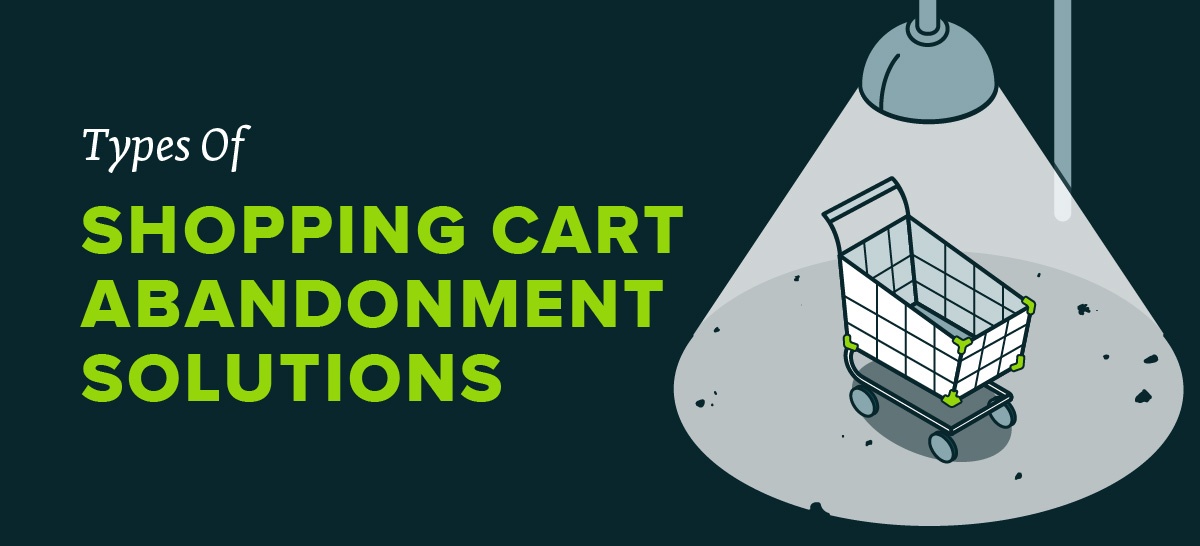
A shopping cart abandonment solution is an effective, albeit last resort, method of increasing e-commerce revenue.
Let’s put this in terms of the brick and mortar store. Imagine a customer in your shop, getting a feel for your product and comparing prices, maybe even carrying a couple items to purchase. The best time to engage with that customer is when they are in the store. Not after they put everything down and have walked out the front door.
In this scenario, a shopping cart abandonment solution chases after the customer as they are getting in their Uber. At that point, they’ve either decided against buying from you or have experienced something that disrupted their cart completion.
Learn how you can convert customers before they leave your site.
So this is the challenge: change the minds of people who have decided not to buy from you and bring back the customers who were driven or pulled away. What exactly can solve that?
The 2 Types of Shopping Cart Abandonment Solutions
There are two broad types of shopping cart abandonment solutions: email and ad retargeting. Each type uses customer information to reach out and bring the customer back to your e-commerce site to complete their purchase; that much they have in common. But the type of information needed and the method of reaching out differ. Let’s look closer.
#1 Shopping Cart Abandonment Email Marketing
In general, shopping cart abandonment email marketing will send one or a series of emails to shoppers that have exited the site with unpurchased items in their cart. These emails remind the shopper of what they have left behind and offer an easy way back to complete their purchase.
Cart Abandonment Email Marketing Advantages
Email allows a level of personalization that is only possible with direct contact. For example, you can include the shopper’s name in the subject line and salutation.
Cart abandonment emails have a lot of real estate to take advantage of too. You can include pictures of the abandoned products, detailed product information, personalized recommendations, and more. The only restriction is when more content begins to overwhelm customers or when too much personalization starts to get creepy.
Cart Abandonment Email Marketing Disadvantages
But before you can send a cart abandonment email, you need an email address. This is an extra step that won’t necessarily be complete before the shopper abandons cart. And if your e-commerce website is optimized to get email addresses before cart abandonment, you still have another battle: the inbox.
For a cart abandonment email to work, the shopper needs to actually see it. It’s all too common for emails, especially the abundance of promotional emails, to get lost in a person’s inbox. Google’s answer to the crowded inbox was to automatically filter all promotional emails into a secondary tab where, no doubt, your email will live. Your strategy will need to account for the challenge of being heard in a noisy inbox or an even noisier promotional inbox.
#2 Shopping Cart Abandonment Ad Retargeting
Ad retargeting follows your shoppers around the web and serves them targeted emails based on what was left in their abandoned cart. These advertisements can appear on social media platforms or any other website that allows retargeting advertising, of which there are plenty.
If you have ever visited a website and then saw advertisements for those products on unrelated websites, you know what this is. The only distinction here is that the ads target the specific shoppers with the specific items left in their cart.
Cart Abandonment Ad Retargeting Advantages
Ad retargeting works by giving your site visitors a cookie. This small piece of code tracks what they leave in their shopping cart and then instructs your retargeting provider which ad to serve to the shopper.
The advantage here is that the customer gets the cookie without having to accept it, and the e-commerce site gets the customer’s information without having to ask for it. There are some exceptions to this rule, but generally, this is how it works.
And because you get to cookie every site visitor, you have a larger percentage of your cart abandoners to target as opposed to email. This larger audience gives marketing teams better ground to test and optimize.
Finally, users see your retargeting advertisements everywhere. You don’t have to rely on them going to their inbox and opening your email; They get the message wherever they browse.
Cart Abandonment Ad Retargeting Disadvantages
Ad blockers directly impact the effectiveness of retargeting campaigns. In January of 2017, Business Insider reported that there were 615 million devices using ad blocker. And eMarketer reported that nearly half of millennials (46%) use adblocker on one or more of their devices. These numbers are growing and do not show signs of slowing down.Even people who are exposed to retargeting ads may not see them. This is sometimes referred to as “banner blindness” and is especially prevalent, again, in millennials.
Retargeting technologies have yet to find a way to truly overcome ad blockers and banner blindness. So while retargeting may be a great strategy today, it’s not a surefire strategy to count on.
The Only Way to Reduce Shopping Cart Abandonment is…
conversion optimization.
Shopping cart abandonment solutions don’t reduce shopping cart abandonment, but they are still a valid way to pursue higher revenue.
The reason cart abandonment solutions can claim such high levels of success is because they inherently target shoppers that have already demonstrated their intent to buy. These shoppers have already shown that if they were to buy from you, they would buy those products. As a result, you collect a highly targeted list, either cookie or email, with enough information to run personalized campaigns.
But if you are trying to address your abandonment problem, you will need to consider strategies that reduce the initial shopping cart abandonment rate. And the only way to do this is with conversion optimization. Find out why customers are leaving their cart and focus your optimization efforts on the bottom of the funnel.
Shoppers at the bottom of the funnel have already demonstrated their intent. Optimize your site for them with tools like on-screen messages. Just like in the brick and mortar store, you’ll have less resistance from the shoppers still in your store, with items in their hand, than from the shoppers who are already out the door.
